Is Jennifer Aniston Reversing Her Own Age Naturally, or Is It Botox?


Jennifer’s flawless appearance prompted rumors of plastic surgery.
Have you ever wondered what Jennifer Aniston does to maintain her ageless beauty? Has she ever undergone treatment with Botox or fillers?
Actress Jennifer Aniston shot to fame after playing Rachel Green on the hit American sitcom Friends. Because of her stunning appearance, impressive acting chops, and impeccable style, she stands out from the crowd. Being one of the A-list actresses in Hollywood brings with it a great deal of controversy, ranging from personal affairs to plastic surgery. Nevertheless, have you ever pondered the question of what the key is to her everlasting beauty? Is there any part of her face that a surgeon hasn’t worked on at some point?
Keep reading to find out what happens next.
Due to the fact that Jennifer’s forehead is flawless and free of wrinkles and that her nose is perfectly shaped, her name has frequently been brought up in conversations about plastic surgery. On the other hand, the actress, who is in her mid-50s, is a proponent of natural aging. That’s exactly right.
Jennifer Aniston once told Bobbi Brown, the Chief Editor of Yahoo Beauty, that she believes in natural aging and has no interest in injecting any Botox or fillers to achieve flawless skin. One possible interpretation of her remarks is that she has observed women making efforts to delay the onset of old age through various means. I am thankful that I was able to learn from their mistakes, as I will not be injecting Botox into my face. They make my heart hurt every time I see them. Every time I see you, the thought crosses my mind, Oh God, if you only knew how much older you look. They are desperately trying to slow down the passage of time, but all you can see is an insecure person who refuses to grow older the way they were meant to.”
Jennifer Aniston went on to talk about her ex-fiancé, Justin Theroux, revealing that he was very against getting any kind of cosmetic enhancement, including Botox and fillers. She continued, “I also have a fiance who will put a gun to my head if I touch my face in any way.”
Jennifer’s perpetually glowing appearance fueled widespread speculation that she had plastic surgery. After that, it was revealed that the star of Murder Mystery 2 had undergone laser treatment to remove the first few layers of her skin, resulting in an inner glow. She had previously stated, “I did something called a peel,” in a 2014 television interview. You don’t notice that you look like a burn victim until a week later, and then it just sort of falls off.
Rumors also circulated that Jennifer Aniston had undergone cosmetic nose surgery, but the actress dispelled those rumors by revealing that she had, in fact, undergone surgery on her nose—though for medical reasons, not aesthetic ones. In her twenties, she experienced difficulty and required surgery to fix a deviated septum.
You’ve finally uncovered the key to Jen’s youthful glow.
Does Winnipeg’s millennials’ love of fillers indicate “very unrealistic expectations”?


Studies have linked excessive social media use to negative body image and eating disorders.
A plastic surgeon in Winnipeg noted that although the number of patients from Generation Z seeking cosmetic procedures is on the rise in the United States, this particular group is more likely to opt for non-invasive treatments like Botox.
A recent survey conducted in the United States found that 75% of facial plastic surgeons expect a rise in the number of patients under the age of 30 seeking cosmetic procedures or injectables in 2022.
If you look at the data from the past five years, you’ll see a consistent growth pattern.
Although a double board-certified plastic surgeon hasn’t noticed a rise in the number of patients under 30 seeking treatment at his clinic and surgery facility in Winnipeg, he has noticed a growing trend among that age group toward injectables in an effort to achieve an aesthetic made popular on social media.
Big lips were somewhat of a huge trend a few years ago, but that has since started to fade. Younger patients are increasingly seeking out Botox, and they do so for preventative rather than curative reasons.
Besides Barbie noses and chin implants, the plastic surgeon says buccal fat reduction and chin augmentation are also popular cosmetic procedures right now.
No matter the patient’s age, they should consider these procedures as permanent as a tattoo and keep in mind that styles come and go.
A competent doctor will not perform a facelift on a patient who is only 20 years old, for instance, because the procedure is not appropriate for someone of that age. Patient education is sometimes necessary.
Patients with body dysmorphic disorder may, for instance, present to the doctor with complaints like “my face is disfigured or asymmetrical,” despite the doctor’s examination revealing no such abnormalities.
Social Media’s Connection to Body Image Problems
The prevalence of social media has a significant impact on today’s standards of beauty.
Regrettably, social media doesn’t always act in a constructive manner. Some patients’ expectations are greatly exaggerated as a result of seeing photoshopped images on the site.
Multiple studies have found an association between excessive social media use and negative body image and eating disorders.
People who spend a lot of time on social media are more likely to have self-esteem issues and worry about what other people think of them.
However, the results of these studies do not prove a causal relationship. It’s possible that people who have more concerns about their body image tend to spend more time on social media. But could it also work the other way around?
The impact that social media has had on people’s perceptions of their bodies should be a source of concern. Learning to recognize the signs of media overload and limiting one’s exposure to these platforms are two strategies for dealing with this issue.
The use of social media in constructive ways is possible, and some of these ways include encouraging self-expression and creativity as well as a sense of community.
Do you control your use of social media, or do you feel that it controls you?
Many young people’s careless approaches to and extensive use of social media platforms inevitably lead to negative outcomes.
Parents play a crucial role in their children’s sense of self-worth
It is not enough to simply remove harmful online images of beauty standards if we want to improve young people’s body image. Instead, parents and caregivers should keep an eye on their children’s social media use, have open conversations with them about what they see, and act as positive role models for self-love.
Language is incredibly potent and crucial. Fat shaming has become commonplace in our culture. We tell each other over the dinner table, “I can’t eat that” or “It’s my cheat day.”
When children observe their parents enjoying life and being comfortable in their own skin, those emotions are transmitted to them.
Parents play an essential role in safeguarding their children from the risks associated with the use of social media. Technology is most useful when it complements rather than replaces interpersonal connections.
The likelihood of these detrimental effects occurring in young people is lower when they have aspirations in life. When people have a higher sense of self-worth, they are less likely to make unfavorable internal comparisons.
Instructions on using Botox are now available for medical professionals. Visit https://dentox.com/all-courses/ for online options or https://dentox.com/live-courses/ to participate in classes alongside real patients. Learning how to improve one’s health, appearance, and vision can greatly enhance a patient’s quality of life.
Marketing mistakes to avoid in the field of facial aesthetics

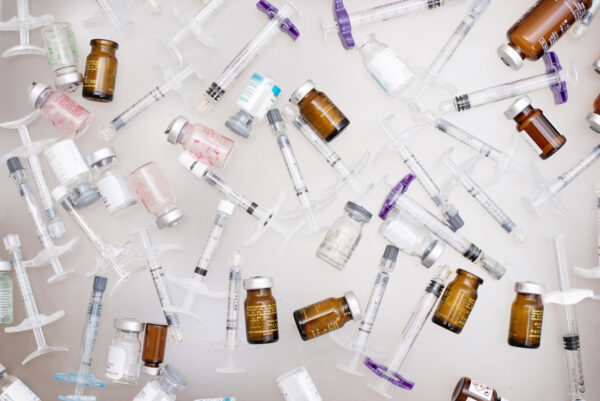
Similar to many other facial aesthetic procedures, Botox is a prescription-only medicine (POM), so advertising for it should be restricted.
Your facial aesthetics business could benefit from a wide variety of different marketing strategies. Websites and social media promotion were among the items included.
Botox, like many other facial aesthetic treatments, is a prescription-only medicine (POM), so there are strict regulations regarding its promotion.
It is against the law to advertise Botox or Botox treatments
The Committee for Advertising Practice and the Advertising Standards Agency have stated that it is illegal to advertise Botox or Botox treatments to the general public in any way. This applies to all forms of media, including websites and social media platforms, as well as paid advertisements and unpaid marketing posts or communications.
Because of this, Botox is unable to advertise on the website or any of the social media platforms. Some medical professionals refer to it as an “anti-wrinkle treatment,” even though this term could just as easily refer to dermal filler or any number of other skin treatments. On the other hand, there is some disagreement as to whether or not this is admitted.
You might consider advertising the consultation for these treatments instead. Therefore, you should not hesitate to promote a “consultation with a medical professional to discuss anti-aging treatments.” It is a standard best practice to ensure that you offer other anti-aging treatments that do not involve POMs.
It is also essential to make sure that prospective clients are aware of the necessity of a consultation as well as a comprehensive evaluation performed by the medical professional, the results of which may or may not result in the provision of treatment with Botox.
Aesthetic facial procedures before and after images
Showing before and after pictures of Botox is also discouraged because it could be interpreted as advertising for the POM treatments. When showing before and after pictures of facial aesthetic treatments, one needs to make sure that the purpose of the display is to showcase work, provide value, educate the audience, and not play on the audience’s insecurities.
Displaying the prices of specific treatments is also discouraged because doing so may sway a potential client’s choice. Following the initial consultation that the client has with the practitioner, the practitioner will be able to provide the client with an estimate of the cost of the treatment that they will be receiving. There needs to be enough time for clients to cool off and think about their options.
It should go without saying that you are not permitted to edit the images that are being displayed. However, there are some practitioners who might want to edit some imperfections as long as they are not related to the treatment that is being displayed. For instance, when comparing the before and after results of lip augmentation with dermal filler, blemishes on the skin may need to be removed.
The principle of transparency is extremely important, and we have a duty to make certain that clients are not being deceived in any way.
Dentox educates medical personnel on the best methods for safely and effectively injecting patients with Botox. You will be able to make a positive impact on the lives of your patients if you acquire new skills that will help them improve their appearance, health, and vision. Courses are available online at https://dentox.com/all-courses/ and in-person with actual patients at https://dentox.com/live-courses/.
Just How Crucial Botox Education Is for Nurses


Nurses who take Botox injection courses will learn how to examine patients’ faces, choose the best injection locations, and properly administer Botox.
One of the most common cosmetic procedures performed worldwide, Botox injections continue to gain popularity year after year. Although Botox injections are commonly associated with the beauty industry, they also have many legitimate medical uses. Since Botox injections are becoming increasingly popular, many nurses are thinking about taking courses to learn how to administer them.
Learn about the importance of Botox training for nurses and the many ways in which it can help patients.
Botox’s Medical Potential
Understanding the medical applications of Botox is crucial before delving into why nurses should consider Botox training. Clostridium botulinum is the bacterium responsible for making the neurotoxin botox. Various medical conditions can be effectively treated with its use because it temporarily paralyzes muscle activity. Examples of how Botox is used in medicine include the following:
- Migraine: People who experience migraines frequently may benefit from Botox injections. The injections work by preventing the body from making chemicals that contribute to pain and inflammation.
- Muscle spasms: Botox injections are used to treat muscle spasms in a variety of locations on the body, such as the neck, shoulders, and eyelids.
- Excessive sweating: Hyperhidrosis, or excessive sweating, is a condition that can be treated with Botox injections. Injections of the substance work by impeding nerves that trigger sweat glands.
- Bladder Dysfunction: Overactive bladders and other bladder dysfunctions can be treated with Botox injections.
The Urgency of Nurses Having Botox Training
- To Increase Their Capabilities: Nurses play a crucial role in the healthcare system and are accountable for a variety of patient care services. Nurses who receive Botox training can increase the range of services they provide to patients. They are qualified to administer Botox injections for medical as well as cosmetic purposes.
- To Address the Needs of Individual Patients: As the popularity of Botox treatments grows, more and more people are looking for medical professionals who offer the procedure. Educating themselves on Botox allows nurses to better serve their patients. This can be useful for nurses in retaining current patients and gaining new ones.
- To Offer Superior Medical Services: Botox injections are a medical procedure that requires trained professionals to carry out. Nurses who have received Botox training are better equipped to provide excellent care, which improves patient outcomes.
- To Coordinate Care with Other Medical Professionals: In order to provide the best care possible for their patients, nurses collaborate with other medical professionals. Nurses who have undergone Botox training are better able to collaborate with other medical professionals for the benefit of their patients. They are able to collaborate with other medical professionals to create individualized treatment plans for their patients.
Benefits of Botox Training for Nurses
- Possibilities for Professional Growth: New opportunities exist for nurses who acquire Botox training. They can find employment in places like cosmetic surgery clinics, dermatology offices, and health spas. Nurses who are interested in providing Botox injections to patients on a freelance basis can open their own clinics.
- Possibility of Gaining More Money: By learning how to administer Botox, nurses can boost their income. Since more people are willing to pay for the specialized care they provide, they are able to raise their prices. Commissions on Botox injections administered by nurses at medical spas and plastic surgery centers can significantly boost their income.
- Improved Training for Professionals: A nurse’s career prospects can be improved through Botox training. This demonstrates their dedication to their profession and their desire to provide the highest quality care to their patients by continuing their own education and training. To keep their nursing licenses current, nurses need to complete continuing education hours, and those hours can be earned through Botox training.
- Increased Contentment Among Patients: Whether for medical or aesthetic purposes, Botox injections can help patients feel better overall. Botox injections are a great way for nurses to boost their patients’ self-esteem and self-confidence. This has the potential to increase positive word-of-mouth and patient satisfaction and loyalty.
An Overview of Botox Education for Nurses
Nurses can expect to learn both the theory and practice of Botox administration during their training. The theoretical section discusses such topics as facial anatomy, muscle physiology, Botox indications and contraindications, and so on. The hands-on component includes practicing injection techniques on mannequins or actual patients under the watchful eye of a seasoned instructor.
Nurses who take Botox injection courses will learn how to assess patients’ faces thoroughly, determine the best injection sites, and administer Botox safely and effectively. They will also be taught how to deal with potential side effects like bruising, swelling, and unevenness.
In conclusion, nurses who are interested in expanding their skill set, responding to patients’ needs, delivering high-quality care, and fostering a team approach with other healthcare professionals will find that Botox training is essential. Nurses who receive Botox training can provide their patients with a wider range of services, as Botox injections have many medical applications. Besides, nurses who have received Botox training report increased job satisfaction, higher salaries, more opportunities for career advancement, and happier patients.
Dentox is a training program for medical professionals on how to safely inject Botox. Learn the latest techniques to make your patients healthier and happier. You can learn more about our online courses here: https://dentox.com/all-courses/botox-training/, and about our in-person patient training sessions here: https://dentox.com/live-courses/.
Wrinkle-Free Skin: How Facial Yoga Can Help

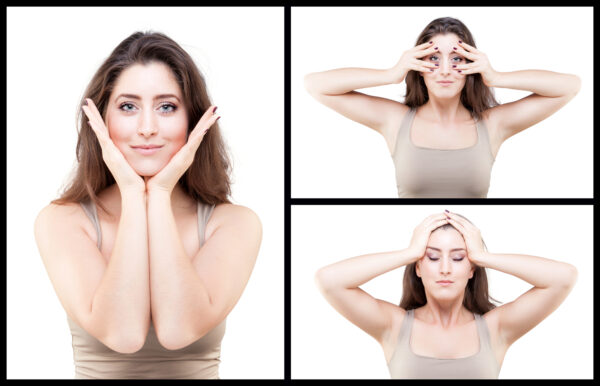
Facial muscle training, also known as Face Gym or Yotox, is a natural cure for wrinkles in the skin of the face.
The natural remedy for facial wrinkles is facial muscle exercise, also known as Face Gym or Yotox.
Everyday activities like washing your face, brushing your teeth, pouting, sticking out your tongue, and rolling your eyes can double as amusing but effective exercises for the facial muscles that help prevent the drooping of your mouth’s corners and the formation of concentration lines.
A facial yoga practice
A place where muscles can contract and release is ideal for training. There’s no reason our many facial muscles can’t be toned if the gluteus can be sculpted and the neck muscle can be stretched. A growing number of people are turning to the term “Face Yoga” to locate a variety of facial muscle toning and relaxation routines. Although it lacks “the cobra’s” elegance, it can still make you look beautiful and, most importantly, happy.
The tenets of yoga can be applied to the face, including strengthening, stretching, relaxing, maintaining flexibility, and maintaining balance. Everything that is tense is relaxed into a more comfortable state. Anything that dangles unutilized is trained.
Face relaxation
About 26 muscles are used on a daily basis to express various emotions, some more than others. Over time, this can cause lines to form on the forehead, around the eyes, and on the corners of the mouth. Understanding these mechanisms and consciously tensing and relaxing can have an effect.
Face yoga is a brand-new, specialized practice
Anyone who has done yoga knows that in some poses, the face is also involved, almost incidentally. For instance, “The Downward Dog” guarantees healthy blood flow to that area.
For the most part, “the lion” works wonders for loosening up the muscles in your face and neck. Roaring out emotions like anger, stress, or even joy can be very therapeutic.
Exercise preparation
Facial and hand hygiene before working out is essential. They serve an essential purpose in a wide variety of workouts that involve holding, pulling, and massaging with the fingers.
If you feel more confident using a facial care product during training, just make sure it doesn’t look too fancy. After that, a firm grip should still be possible with the hands.
What you need to practice facial yoga
In face yoga, the mirror is the most essential tool. This is the only way to make sure the moves are carried out correctly. Like any other part of the body, the face needs to be warmed up and stretched before any targeted exercises can be performed. For example, the mouth, cheeks, and neck are trained to improve one’s kissing technique.
Free of wrinkles
The area around the eyes can be worked on by pulling the eyebrows upward and holding that position while the eyelids are opened and closed. Every training session should involve full facial movement for optimal results. Consistently engaging in one activity can be counterproductive.
Routines pay off
Facial yoga should be a part of your daily routine if you want to see long-term results. Just ten to twenty minutes of training is sufficient. There is an instantaneous reinforcement of effort. If you stick with it, after 1.5–2 months, you should start to see the first results (and feel the sore muscles even sooner).
A blessing for more than just the face
Facial yoga, like traditional yoga, places a strong emphasis on the breath. After each workout, a period of relaxation should conclude the session.
Just what are the benefits of face yoga? It improves the body’s metabolic rate and blood flow, which in turn lessens the appearance of fine lines and wrinkles and makes the face look younger and more relaxed overall. Muscle tension in the jaw and neck can also be alleviated with some facial gymnastics. It is primarily used as a relaxation technique.
Since stress, like ultraviolet light or nicotine, accelerates the aging process, unwinding is a potent anti-aging method.
Feeling good
Just as keeping a permanent smile on your face can trick your brain into feeling better, relaxing the muscles in your face can help you feel more at peace in other areas of your body.
3 years younger in appearance
U.S. scientists have recently studied the outward effects of facial yoga. About five months after beginning an exercise routine, the women in the study were estimated to look three years younger.
There is information available, both in print and online, for those interested in trying out face yoga. However, it is recommended to train face-to-face with an expert in the truest sense of the word until the exercises are correct, particularly at the beginning.
Although facial yoga is a more organic approach, fillers and Botox are your best choices for a significant and quick transformation.
Medical practitioners can learn the finer points of Botox injection through the Dentox program. Learn the most recent techniques for enhancing the well-being and health of your patients. You may learn more about patient training sessions both online and in person at https://dentox.com/all-courses/botox-training/ and https://dentox.com/live-courses/, respectively.
When is the best time for a Botox injection?


Adverse occurrences from Botox can be lessened when administered by a trained medical professional.
Botox’s ability to reverse aging and block emotions is nothing new, but the demographic it now draws is. Its target demographic has shifted from people in their middle years to those in their twenties for the purposes of prevention. However, when is it best to start a Botox routine?
To counteract the unsightly effects of time, people can choose from a number of different strategies. They frequently opt for Botox treatments.
Even though there is no “right” time to begin your Botox journey, you will see the best results if you have a routine in place well before the first signs of aging appear. Many people begin in their mid to late twenties when the lines first start to become noticeable. This is the time period during which collagen and elastin production typically declines.
Saddeningly, the first signs of skin failure typically appear around the 25-year mark of a person’s life. And despite the fact that there is no single treatment that is appropriate for everyone, you should plan on repeating the injections about once every three months indefinitely, or at least until you are ready for your skin to resume its slow but steady descent into hell.
However, there are a few exceptions; for example, women who are pregnant should not continue receiving injections. Trying to conceive, undergoing IVF treatment, or breastfeeding are three additional examples.
In addition, if you are taking certain medications, such as some anti-coagulants and some Alzheimer’s treatments, or if you are suffering from a neuromuscular disorder, there may be complications. When in doubt, it’s best to get your doctor’s approval before beginning.
If you’re worried about your doctor giving you a condescending lecture about how dangerous Botox is, rest assured: there is no such evidence. Botox carries the same degree of risk as anything else. On the other hand, serious dangers are extremely uncommon.
Researchers found that the most common side effects were localized pain at the injection site, headaches (which occur in 1% of people and can last for hours or days), and minor bruising and bleeding (which occurred in 11-25%).
A skilled and knowledgeable Botox provider can reduce the likelihood of adverse events. No long-term risks have been shown, and this holds true whether you begin using Botox in your twenties or later in life. As long as Botox is used properly and as directed, studies have found that it poses no serious risks to your health and can be safely used for a variety of cosmetic purposes.
Therefore, we can anticipate a generation of eighty-year-olds in the next half century who will still be required to present a valid form of identification if people in their twenties have already begun using Botox. That being said, if you’re into that sort of thing, feel free to Botox to your heart’s content without worrying about serious side effects.
Those of us whose facial horse has apparently already bolted can either accept the lines on our faces for what they are and the stories they tell, frowning as little as possible in the process, or we can try to stop the clock and remain stuck in our mid-30s forever by any means necessary.
If you want to learn how to inject Botox properly, Dentox has a training program you can enroll in. Dr. Howard Katz is widely regarded as the preeminent cosmetic and therapeutic injectable trainer. Join us, and we’ll teach you how to become an injector of the highest caliber, one whose work will be the envy of colleagues and patients alike.
You can enroll in a live online or on-demand course, as well as a seminar, at a variety of locations spread out across the United States. Please visit https://dentox.com/live-courses/ and https://dentox.com/all-courses/ to learn more about our in-person and online training options.
The Face-Changing Effects of a Botox Brow Lift
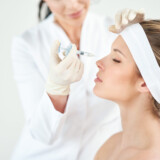
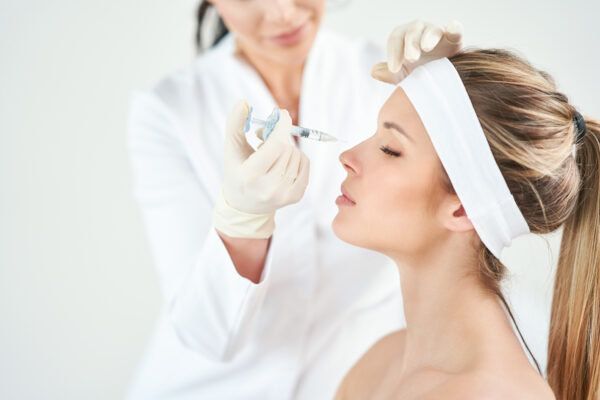
If you’re considering getting a Botox brow lift because you’ve seen the before and after photos online, this article has everything you need to know to make an informed decision.
Nowadays, announcing that you’re going to get Botox is as common as saying you need to run to the store to pick up some milk. In the past 20 years, injectable treatments have become more popular as a way to treat wrinkles and stop them from getting worse, as well as for other medical uses, such as treating excessive sweating. Botulinum toxin injections, which include Dysport and Xeomin in addition to the brand-name Botox, were the most sought-after cosmetic procedure in 2019 and 2020, per the American Society of Plastic Surgeons.
One of the main factors contributing to Botox’s appeal is probably its adaptability. People use Botox for purely cosmetic purposes to get rid of frown lines, make their upper lip perkier, and temporarily raise the arch of their brow. But what is a Botox brow lift, exactly, and what benefits does it have for the face? To read more about this common practice, please scroll down.
What is Botox and How Exactly Does It Function?
Perhaps by now, the news that Botox can lessen the appearance of wrinkles has become common knowledge. The protein botulinum toxin is responsible for this effect. Small doses of botulinum toxin injected by a medical professional into a muscle temporarily stop the muscle from contracting. Muscle contraction is prevented by these proteins because they bind to receptors necessary for their function. By temporarily paralyzing the muscle, Botox can help reduce the appearance of fine lines and wrinkles by preventing the crease-inducing movement that causes them.
Although some patients report longer-lasting effects, Botox treatments are only temporary. Since 2002, the FDA has allowed Botox to be used cosmetically to treat “crow’s feet” (at the outer corners of the eyes), forehead lines, and “11 lines” (located between the eyebrows). However, many experts agree that additional off-label uses are safe, so it’s not uncommon for people to do so. Some people experience temporary headaches or eyelid drooping after receiving Botox, and these effects can last for a few months.
An Explanation of the Botox Brow Lift Procedure
When injected into the forehead, Botox can temporarily halt muscle contraction, causing the eyebrows to rise ever-so-slightly. Botox is injected into the forehead muscles to rebalance them and raise the brows for a more youthful appearance. Twenty to thirty units will be used by the doctor to create this effect, and they will be strategically inserted in the central part (Glabella) between the eyes and along the brow in a predetermined pattern to achieve a minimum of a 5 mm lift. Despite the fact that administering Botox for the purpose of a brow lift is not approved by the FDA, many trained injectors do so anyway.
Since the eyebrow tends to descend with age due to looser muscles and skin, lifting it is a common method for creating a more youthful appearance. Also, a brow lift can diminish the look of frown lines and crow’s feet above the eyes, giving the impression of greater alertness. It is possible to achieve a temporary brow lift through the use of Botox or another botulinum toxin injection.
The American Board of Cosmetic Surgery claims that the Botox brow lift is less invasive than a surgical brow lift, which necessitates incisions and a week of recuperation. However, the results of a surgical brow lift can be more noticeable because the surgeon can trim away redundant muscle and skin to reveal smoother skin.
Is There Any Risk Involved With Getting Botox For Your Brows?
It’s possible you’ve seen a person on the internet or television who seems perpetually surprised due to their extremely arched brow. Check out some before and after pictures of patients your doctor has treated to get a feel for their work if you’re considering a brow lift but are concerned about the potential risks. If they are not positioned properly, they can cause the outer brow to peak, giving the wearer a “Spock-like” appearance.
By administering small doses of extra Botox in the appropriate locations, injectors can correct a botched Botox brow lift. There isn’t much you can do if the entire eyebrow has already been raised too high. Simply wait for 10 to 12 weeks for the Botox to stop working, at which point the eyebrows will start to descend once more.
What Else You Need to Understand Prior to a Botox Brow Lift
The best way to determine whether a Botox brow lift is appropriate for you is to consult with a skilled, experienced injector if you’re considering the procedure. In some states, registered nurses and physician’s assistants are also allowed to inject Botox after completing training, but a plastic surgeon or dermatologist with specialty certification is your best bet. An in-person evaluation of your brow shape will allow them to make predictions about how the injections will affect the shape of your brows. Take note of the word “predictions,” as even skilled injectors cannot guarantee how the results will manifest on your face.
The typical price range for a brow lift with 20 to 30 units of Botox is $350 to $500. Within the first 48 hours following your injection, you should begin to feel the effects of Botox.
A Botox eyebrow lift may help you achieve the look you want, whether you want to minimize forehead lines, increase the distance between your brows and your eyelids, or simply appear more alert. Make sure to conduct thorough research before selecting a service provider.
After getting lip injections dissolved, Love Island actress Molly-Mae Hague inspired a massive make-under movement, the death of Botox and fillers as Brits seek a natural appearance
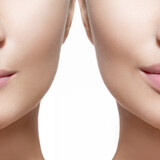

Fillers are chemicals that are injected into the face to fill in creases and lines and add volume to places like the lips or cheeks.
There was a time when Botox and fillers were essential for anyone seeking to prevent wrinkles and flaunt a Hollywood-worthy pout.
However, data suggests that Britons are beginning to lose interest in injectable anti-aging procedures.
According to reports from cosmetic surgeons, the number of facial cosmetic procedures performed in the United Kingdom dropped by 7.5% that year.
Glitzy celebrities and reality stars have been linked to the rise in popularity of female patients seeking both Botox and fillers.
However, they have recently emerged as a leader in a trend being called the “make-under.”
Courteney Cox, Molly-Mae Hague, Faye Winter of Love Island, Megan McKenna of The Only Way Is Essex, and Chloe Ferry of Geordie Shore have all flaunted incredible changes after having their fillers removed.
Campaigners claim that stories of celebrities who regret getting cosmetic injections undoubtedly encourage other Britons to follow suit.
They added, however, that many young Britons may continue to seek the procedures from cheaper, unregulated sources, setting themselves up for similar regrets in the future without the financial means to rectify the situation.
The most well-known brand of botulinum toxin, Botox, is a potent substance that paralyzes facial muscles to diminish the appearance of wrinkles.
On the other hand, fillers are substances that are injected into your face to fill lines and wrinkles and add volume to areas like your lips or cheeks.
They both won’t last forever. Depending on the area and extent of treatment, fillers can cost up to £700, while Botox can cost up to £350.
Courteney has gone public about her regret for Botox and facial fillers, revealing that she had them dissolved in order to achieve a more natural appearance.
The Scream VI star’s unnatural appearance in 2015 caused concern, and she has since admitted that she was unaware of her peculiar appearance.
Courteney, who is now 58 years old, has stated that she is grateful that the facial injections could be reversed, allowing her to age gracefully despite her initial attempts to beat the clock with them.
Similarly, Love Island star and influencer Molly-Mae has expressed her gratitude for being able to fix the excessive filler she initially injected into her face.
She was 18 when she first got her lips done, and now she’s 23.
She claims this led to an endless cycle of treatment extensions.
The new mom, who had daughter Bambi in January with boyfriend Tommy Fury, is known for filming herself having her filler dissolved in 2020.
In May of last year, Molly-Mae expressed her satisfaction with the results of having her lip and jaw filler removed, claiming that she looked five years younger.
Faye Winter, a fellow Love Islander member, has expressed remorse over cosmetic facial injections and says she ruined her face with too much lip filler.
“Unsurprisingly, they grew to enormous proportions… My protruding lips were the only visible facial feature,” she said.
She inherited her father’s large teeth, but her own naturally small lips prevented them from properly framing her smile. This prompted her to get filler to create a more symmetrical appearance.
The now 27-year-old woman said that she knew she had too much because her family had told her so, but that it really sank in when she saw herself on television.
She stated that it wasn’t until she saw herself conversing with others and not posing in front of a mirror that she stopped posing and staring at herself in the mirror.
She felt like she had completely ruined her face, despite the fact that everyone knows she looks different when she’s posing in the mirror.
She recorded her efforts to dissolve the filler but claimed she was too ashamed to show the initial results.
She said, “It’s hard to see, but after I stretched my lips, they got all wrinkly and looked like a deflated balloon.”
Faye has previously stated that she had to have a small amount of filler added back after the 4.5 ml she used to have injected was dissolved because her lips had lost all elasticity.
Megan McKenna is another former TOWIE star who has opted for a more natural look. In 2021, the winner of Celebrity X Factor stated that removing her pout was one of her best decisions ever.
In March of last year, Chloe Ferry of Geordie Shore, who had previously said that she “loved” getting cosmetic injections, had filler dissolved for a more natural look.
In recent years, non-invasive cosmetic procedures like Botox injections and fillers have drawn more attention. The reason is that properly administered Botox or fillers shouldn’t be noticeable and should instead give a more youthful, natural appearance.
Skilled medical professionals can inject just the right amount of Botox. They know how to give it in the most effective way possible. Thus, there will be no need for excessive Botox. Dentox is a training program for medical professionals and aestheticians to learn how to properly administer Botox injections.
Medical professionals keen on learning how to give Botox and filler injections can do so now. Online Botox training courses are available at https://dentox.com/all-courses/botox-training/, while live patient courses can be found at https://dentox.com/live-courses/. Learning new techniques that benefit your patients is an excellent way to advance Botox and give your clients the best possible experience.
Getting Botox—what about working out? Here are nine things to remember after getting Botox

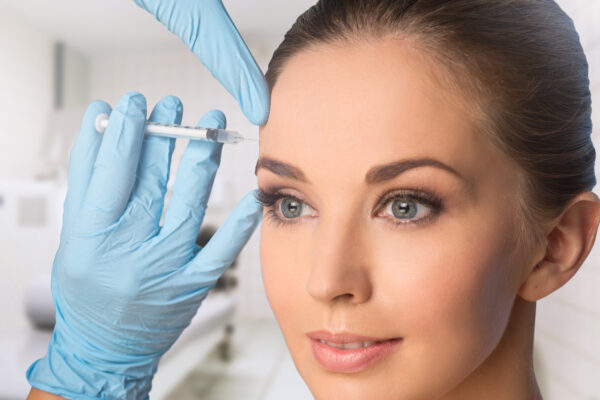
Botox injections are currently one of the most popular cosmetic procedures available.
These days, Botox injections are among the most popular cosmetic treatments out there.
You might be curious about whether or not it is safe to exercise after having a Botox treatment.
All of your clinician’s instructions, both before and after your appointment, should be strictly adhered to for the best possible outcome.
Is it safe to work out after Botox?
A common concern is whether or not you need to wait more than 24 hours before exercising after getting Botox.
After getting Botox, you should relax for at least a day or two before engaging in any strenuous activities.
This is done so that the toxin doesn’t get pushed around too much or be directly applied to the muscles and spread.
Because of this, you shouldn’t engage in high-intensity exercises like running or sprinting right after getting Botox.
The speed with which you can get back to your regular workout routine after your appointment will depend on your current level of fitness and the intensity of your training.
The way your body processes Botox depends on your metabolic rate.
That is to say, the rate at which your body burns calories is directly related to how active you are. Your metabolic rate will increase in proportion to your level of activity.
In other words, the effects tend to last longer in less active people than in more active people.
Nine dos and don’ts for Botox aftercare
Here are nine guidelines for taking care of yourself after getting Botox, including how you should and should not exercise.
#1 Do: Delay engaging in any strenuous exercise for at least 48 hours
You should wait at least 48 hours before engaging in high-intensity exercise like running, cycling, hot yoga, or weight lifting.
Because intense exercise causes an increase in the volume and velocity of blood flowing throughout your body, you may notice that your face becomes flushed or even red during particularly strenuous workouts.
A rise in blood pressure is not necessarily harmful. There are many positive effects on health and well-being in general.
However, as we previously mentioned, increased blood flow following Botox injections may affect where the Botox was placed.
Taking part in strenuous exercise too soon after receiving Botox could cause the injections to move or dislodge.
Botox can have undesirable side effects, such as drooping eyebrows and eyelids if it moves around the body.
Do #2: Practice facial exercises
A study published in 2018 found that performing facial exercises immediately after receiving a Botox injection was a safe and effective way to speed up the onset of the treatment’s clinical effects by up to a day.
Eyebrow knitting, frowning, and other forehead movements would count as facial exercises in this context.
Inconclusive results are reported because, as the study itself admits, there was no prior data to back up the clinical efficacy of facial expressions at the time of the study.
If you’re looking for quick results, facial exercises could be a good option.
After receiving Botox, you shouldn’t start any new facial exercise regimens without first talking to your doctor.
#3 Do: Refrain from drinking alcohol before and after your appointment
You should abstain from alcohol consumption for at least 24 hours before and after your scheduled appointment.
Because alcohol increases the risk of bruising, you may want to hold off on drinking for a few days.
#4 Do: Prevent exposure to the sun and heat after your appointment
The likelihood of bruising can increase when blood pressure rises as a result of the heat and sun.
As a result, you should stay out of the sun and away from hot environments for at least 48 hours after your consultation.
This includes prolonged exposure to sunlight, soaking in hot water, using a sauna or steam room, taking a hot shower, or participating in a hot yoga class.
#5 Don’t: Squat or stoop after your appointment.
You should wait at least 4 hours after your appointment before lying down or bending over.
You might feel like taking a nap after getting your tweaks done, but lying down or bending over could cause Botox to spread and cause bruising.
#6 Don’t: Put pressure on your head following the appointment
Do not engage in any yoga poses that put pressure on your head, and do not wear any tight-fitting hats or other headwear for at least 24 hours.
Botox can migrate from its injection sites or bruise if the treated areas are subjected to pressure.
#7 Don’t: Avoid touching your face after your appointment.
For the first and second post-Botox days, face touching should be avoided.
You should avoid rubbing your face while applying makeup, as this can cause Botox to move to an unintended area of your face.
Touching and rubbing the affected areas can also result in bruising around the injection sites.
#8 Don’t: Sleep on your stomach
There is a higher chance that Botox won’t fully set in if you sleep on your stomach.
As an alternative, sleep on your back to give the Botox time to work its way into your muscles.
Over the course of at least one or two nights, you should refrain from sleeping face down.
#9 Don’t: Take any pain medication prior to or after your scheduled appointment
Blood-thinning medications, such as Advil and Tylenol, should be avoided after Botox injections because they increase the risk of bruises.
It is recommended that you refrain from taking any pain medication for at least 24 hours before and after your scheduled appointment.
If you’re experiencing any kind of pain or discomfort, put an ice pack on the area in question for no longer than 10 minutes at a time.
Is learning how to inject Botox something you’ve always wanted to do? Dentox is ready to start catching you up right away. Visit https://dentox.com/all-courses/botox-training/ or https://dentox.com/live-courses/ to enroll in either virtual or in-person Botox training.
Should we consider face tape the new natural botox?


Many popular TikTok artists have posted videos in which they reveal how face-taping has altered their appearance to make them look younger.
Numerous TikTok creators have shared videos in which they discuss how face-taping has made them appear younger. Estimates put the number of times videos containing the term “face tape” have been viewed on the social media app at around 565 million. One internet user has even coined the phrase “natural botox” to describe the method.
Facial taping entails applying small strips of tape to problem areas like the glabellar lines or nasolabial folds before bed. You can also tape your face by placing two pieces of tape on either side of your temples and pulling the strings tight. To use this technique, simply pull the strings tight and tie them behind your head. Fans claim to have fewer wrinkles when they wake up.
Not only has TikTok popularized the face-taping trend, but other platforms have as well. The manufacturers of face tape frequently boast about the product’s many uses. For instance, the face tape products by Kinesiology Sports Tape, a self-described wellness sports brand, are advertised as a non-invasive way to reduce facial puffiness and wrinkles.
Where did the concept of taping one’s face come from?
Taping one’s face is not novel. It’s possible that face tape first hit the market in 1889, thanks to its use by stage actors looking to conceal the effects of aging. After that, during the Golden Age of Hollywood, stars would use face tape to minimize the look of wrinkles on their faces. The wearer’s wig or hair typically conceals this tape.
Does it function, then? There hasn’t been any research to support the effectiveness of face-taping. Any effects it may have are also short-lived. It’s merely a short-term solution. Patients’ ability to move their facial muscles of expression can be temporarily restrained by applying face tape. The patient may experience a brief reduction in wrinkles and a temporary resting facial expression as a result of this.
Although one study found that lymphatic kinesio face taping improved blood and lymph microcirculation in patients who had undergone orthognathic surgery, that research only included patients who had undergone surgery; people who just tape their faces before bed or for a few hours would not see the same benefits.
Experts emphasize that face taping is not a form of “natural botox” and cannot make permanent changes to the skin because wrinkles can result from a variety of factors, including aging, hormones, disease, smoking status, and sun exposure.
The deterioration of collagen and elastin in the skin over time causes wrinkles, and face taping doesn’t do anything to reverse that process. Muscle movement causes dynamic wrinkles, which appear when the same facial expressions are made repeatedly over time, eventually permanently etching lines into the skin. Because face-taping does not halt this motion, it cannot forestall the onset of these creases.
Various tape types for face taping
The use of tape by content producers on TikTok seems to range from common Scotch tape to products like Invisitape that are intended to give the appearance of a facelift. A lot of people who enjoy face taping also use kinesiology tape (KT), which was developed in the 1970s to treat a variety of health issues, from musculoskeletal pain to sports injuries.
Although KT is frequently used, many of its medical applications have not been scientifically proven to be effective therapeutic tools. Research on the therapeutic benefits of KT is inconclusive, despite its widespread use, according to a 2021 review published in the International Journal of Sports Physical Therapy. The reviewers analyzed the results of 38 studies and conducted a small survey to draw their conclusions.
Specialists advise against using facial tape on patients
Face taping carries with it a few potential dangers: Adhesive tapes have been linked to a variety of skin reactions, including itching, redness, and even breakouts. Rare but possible side effects of prolonged adhesive use include excoriations, skin injury, blisters, scarring, and melasma.
Still, patients now have better options overall, not just to minimize danger.
Treatment with non-ablative lasers or photodynamic rejuvenation may be helpful for moderate wrinkles. Non-ablative lasers (like Fraxel) are effective because they increase collagen production, which in turn increases skin elasticity. With photodynamic rejuvenation, fine lines and wrinkles brought on by sun exposure are treated with a photosensitizing agent and light therapy.
Individuals who prefer non-invasive treatments may find chemical peels (which exfoliate the skin) or CO2 resurfacing (which eradicates damaged skin cells and stimulates collagen production) more appealing for deep wrinkles.
When the laxity is more severe, only surgery performed by a trained plastic surgeon should be considered.
Patient education on the latest social media trends
Patients often go into procedures with unrealistic expectations after hearing about them on social media or from influential people. Those who seek out quick fixes are frequently let down.
In order to prevent patients from wasting time and money on unnecessary procedures, doctors should be honest with them. Furthermore, before undergoing any cosmetic treatments or procedures, it is always important to remind patients to consult with a board-certified dermatologist. Even non-invasive procedures like non-ablative laser resurfacing can leave lifelong scars if carried out by inexperienced hands.
It’s obvious that overnight face-taping isn’t very useful, as it doesn’t offer any long-term benefits and can lead to a few potential risks. When it comes to methods for reducing wrinkles and lines, Botox is among the simplest, safest, and most effective.
Dentox provides a course on Botox injection techniques so that medical professionals can become qualified injectors. Dr. Howard Katz is widely regarded as the foremost expert and trainer in the field of cosmetic and therapeutic injectables. Learn from us, and you will become an injector of the highest caliber.
There are several places in the United States where you can attend a seminar or take a course, either live or on demand. Visit https://dentox.com/live-courses/ and https://dentox.com/all-courses/ to learn more about our in-person and online training options.





